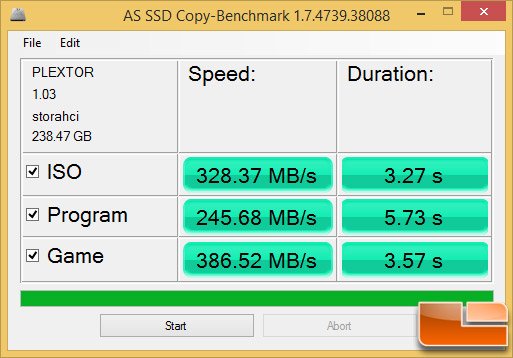Plextor M6e 256GB M.2 PCIe SSDs in RAID – Hitting 1.4GB/s
ATTO & AS-SSD Benchmarks
ATTO v2.47
ATTO is one of the oldest drive benchmarks still being used today and is still very relevant in the SSD world. ATTO measures transfers across a specific volume length. It measures raw transfer rates for both reads and writes and places the data into graphs that can be very easily interpreted. The test was run with the default runs of 0.5KB through 8192KB transfer sizes with the total length being 256MB.
Single Drive:
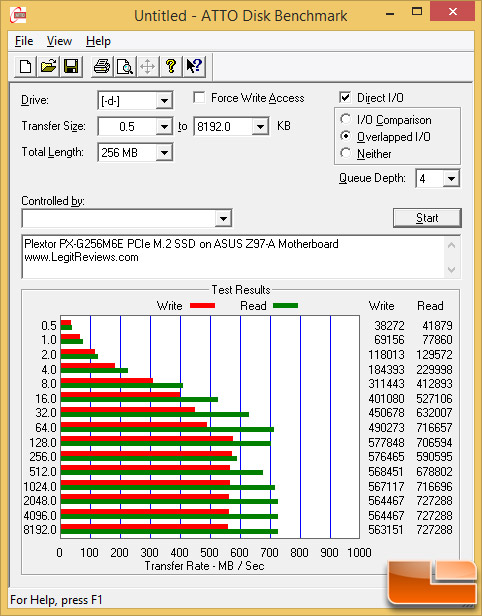
Software RAID0:
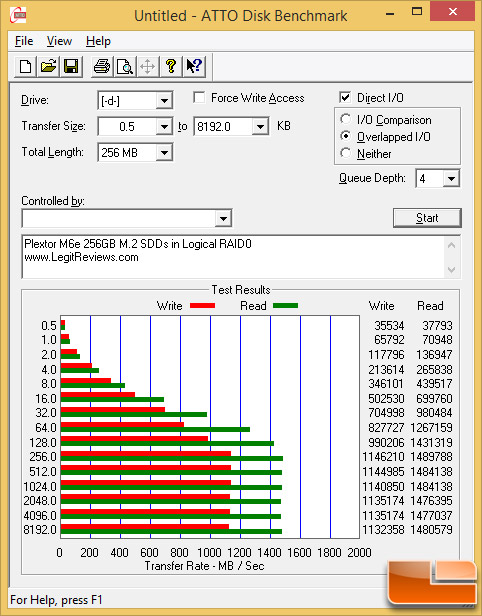
Benchmark Results: ATTO showed the Plextor M6e 256GB M.2 SSD maxing out at 727 MB/s read and 578MB/s in the standard overlapped I/O benchmark with one drive by itself. With the pair of drives setup as a striped dynamic volume in Windows 8.1 Pro we were able to get 1490MB/s read and 1146MB/s write!
AS-SSD (1.7.4739.38088) Benchmark:
We have been running the AS-SSD Benchmark app for over some time now and found that it gives a broad result set. The programmer has worked very hard on this software and continues to make updates often so if you use it, show him some love and send him a donation. There are now three tests that are found within the tool and we’ll show the results from all three of them.
Single Drive:
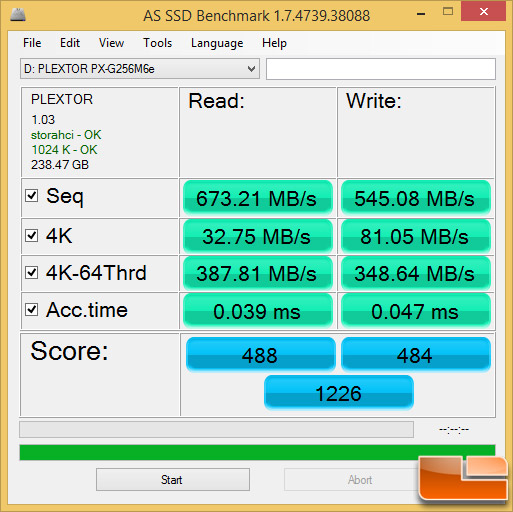
Software RAID0:
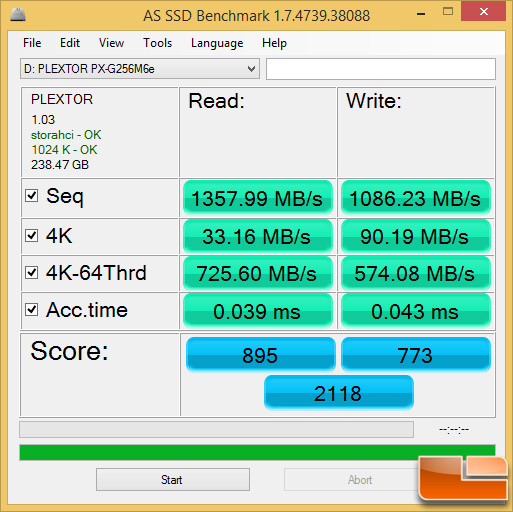
Benchmark Results: AS SSD showed the single Plextor M6e 256GB M.2 SSD topping out at 673.21 MB/s read and 545.08 MB/s write in the sequential benchmark. With a dynamic striped volume we were getting 1357.99 MB/s read and 1086.23 MB/s write in the sequential benchmark. The 4K read speed remained at around 33MB/s, but the 4K write speed was up by about 10MB/s.
Single Drive:
Software RAID0:
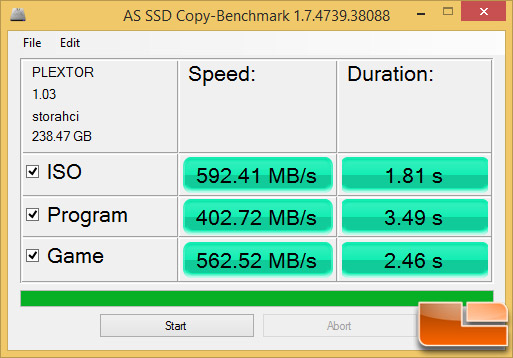
Benchmark Results: The AS SSD copy benchmark showed the speed topping out at 386.52 in the game test with a single Plextor M6e 256GB M.2 PCIe SSD, but with two drives we topped out at 592.41MB/s on the ISO test.
Single Drive:
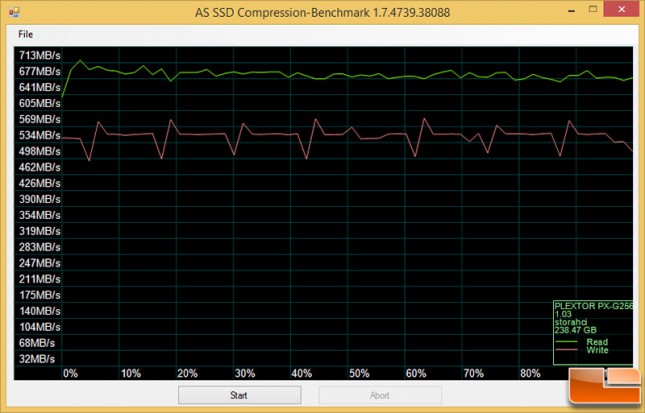
Software RAID0:
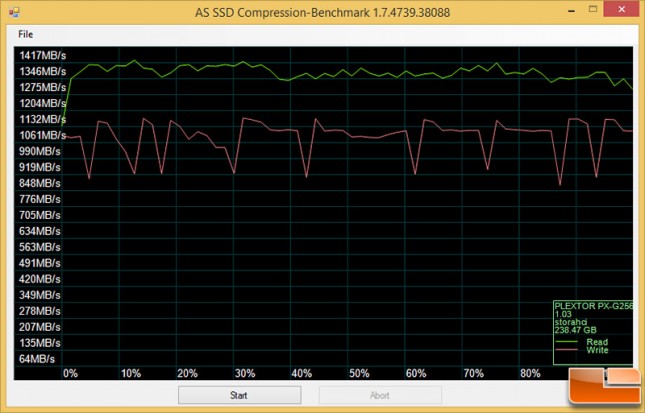
Benchmark Results: Performance on the Plextor M6e 256GB M.2 SSD appeared to be fairly consistent when it came to compressible data as the single drive and dynamic volume were similar other than their speeds.

